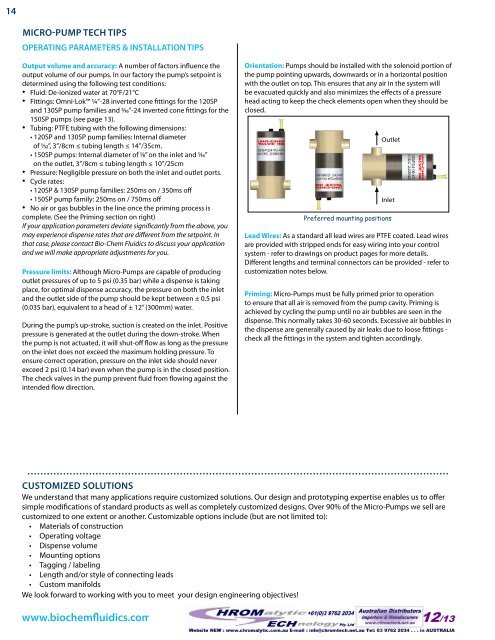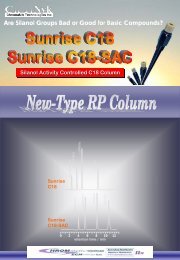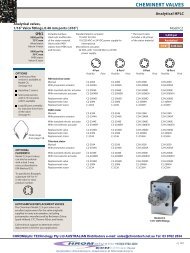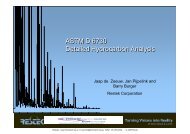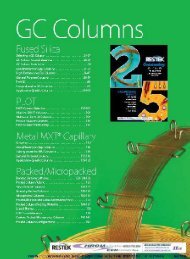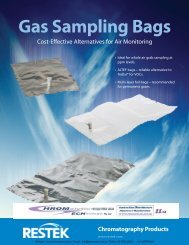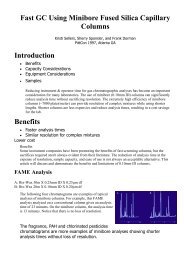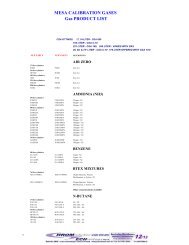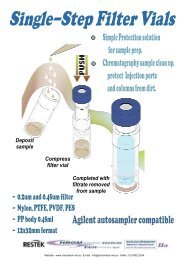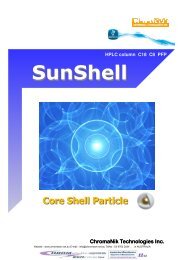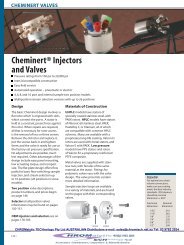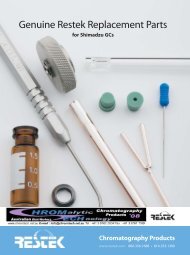Solenoid Operated Micro-Pumps
Solenoid Operated Micro-Pumps
Solenoid Operated Micro-Pumps
- No tags were found...
You also want an ePaper? Increase the reach of your titles
YUMPU automatically turns print PDFs into web optimized ePapers that Google loves.
14<br />
MICRO-PUMP TECH TIPS<br />
OPERATING PARAMETERS & INSTALLATION TIPS<br />
Output volume and accuracy: A number of factors influence the<br />
output volume of our pumps. In our factory the pump’s setpoint is<br />
determined using the following test conditions:<br />
• Fluid: De-ionized water at 70°F/21°C<br />
• Fittings: Omni-Lok 1/4”-28 inverted cone fittings for the 120SP<br />
and 130SP pump families and 5/16”-24 inverted cone fittings for the<br />
150SP pumps (see page 13).<br />
• Tubing: PTFE tubing with the following dimensions:<br />
• 120SP and 130SP pump families: Internal diameter<br />
of 1/32”, 3”/8cm ≤ tubing length ≤ 14”/35cm.<br />
• 150SP pumps: Internal diameter of 1/8” on the inlet and 1/16”<br />
on the outlet, 3”/8cm ≤ tubing length ≤ 10”/25cm<br />
• Pressure: Negligible pressure on both the inlet and outlet ports.<br />
• Cycle rates:<br />
• 120SP & 130SP pump families: 250ms on / 350ms off<br />
• 150SP pump family: 250ms on / 750ms off<br />
• No air or gas bubbles in the line once the priming process is<br />
complete. (See the Priming section on right)<br />
If your application parameters deviate significantly from the above, you<br />
may experience dispense rates that are different from the setpoint. In<br />
that case, please contact Bio-Chem Fluidics to discuss your application<br />
and we will make appropriate adjustments for you.<br />
Pressure limits: Although <strong>Micro</strong>-<strong>Pumps</strong> are capable of producing<br />
outlet pressures of up to 5 psi (0.35 bar) while a dispense is taking<br />
place, for optimal dispense accuracy, the pressure on both the inlet<br />
and the outlet side of the pump should be kept between ± 0.5 psi<br />
(0.035 bar), equivalent to a head of ± 12” (300mm) water.<br />
During the pump’s up-stroke, suction is created on the inlet. Positive<br />
pressure is generated at the outlet during the down-stroke. When<br />
the pump is not actuated, it will shut-off flow as long as the pressure<br />
on the inlet does not exceed the maximum holding pressure. To<br />
ensure correct operation, pressure on the inlet side should never<br />
exceed 2 psi (0.14 bar) even when the pump is in the closed position.<br />
The check valves in the pump prevent fluid from flowing against the<br />
intended flow direction.<br />
Orientation: <strong>Pumps</strong> should be installed with the solenoid portion of<br />
the pump pointing upwards, downwards or in a horizontal position<br />
with the outlet on top. This ensures that any air in the system will<br />
be evacuated quickly and also minimizes the effects of a pressure<br />
head acting to keep the check elements open when they should be<br />
closed.<br />
Outlet<br />
Inlet<br />
Preferred mounting positions<br />
Lead Wires: As a standard all lead wires are PTFE coated. Lead wires<br />
are provided with stripped ends for easy wiring into your control<br />
system - refer to drawings on product pages for more details.<br />
Different lengths and terminal connectors can be provided - refer to<br />
customization notes below.<br />
Priming: <strong>Micro</strong>-<strong>Pumps</strong> must be fully primed prior to operation<br />
to ensure that all air is removed from the pump cavity. Priming is<br />
achieved by cycling the pump until no air bubbles are seen in the<br />
dispense. This normally takes 30-60 seconds. Excessive air bubbles in<br />
the dispense are generally caused by air leaks due to loose fittings -<br />
check all the fittings in the system and tighten accordingly.<br />
Customized Solutions<br />
We understand that many applications require customized solutions. Our design and prototyping expertise enables us to offer<br />
simple modifications of standard products as well as completely customized designs. Over 90% of the <strong>Micro</strong>-<strong>Pumps</strong> we sell are<br />
customized to one extent or another. Customizable options include (but are not limited to):<br />
• Materials of construction<br />
• Operating voltage<br />
• Dispense volume<br />
• Mounting options<br />
• Tagging / labeling<br />
• Length and/or style of connecting leads<br />
• Custom manifolds<br />
We look forward to working with you to meet your design engineering objectives!<br />
www.biochemfluidics.com


